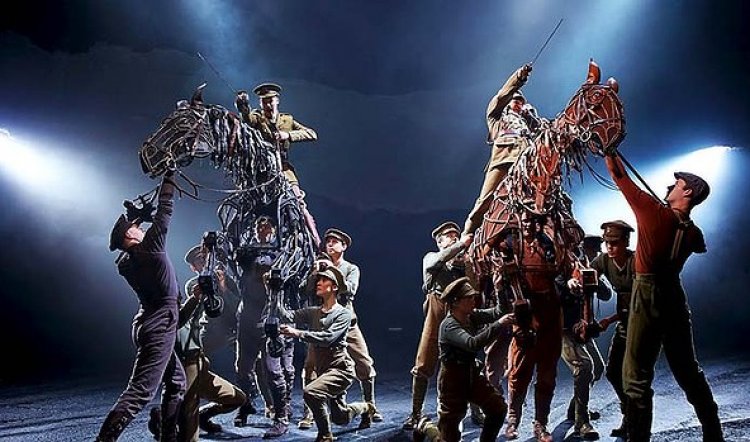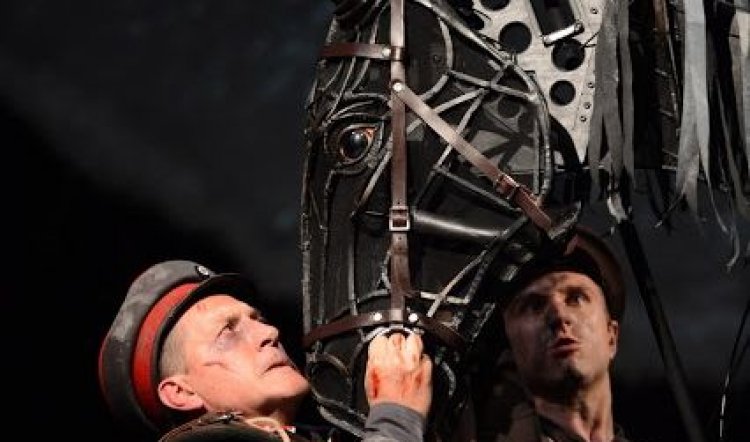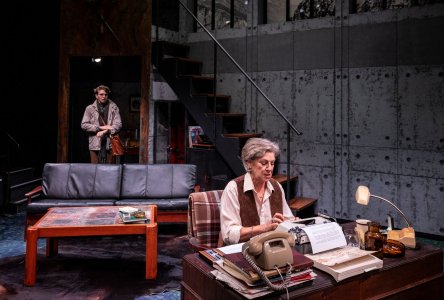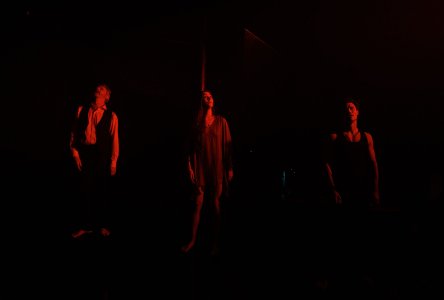
WAR HORSE
WAR HORSE, Lyric Theatre Sydney, March 16-June 30, 2013.
When Anna Sewell's novel Black Beauty was published in 1877, shortly before her death, she saw its initial success but not the lasting popularity (more than 50 million copies sold to date and a dozen film and TV adaptations). Nor could she have realised how influential it would become - launching a genre of horse and pony fiction and successive generations of readers, young and old.
Michael Morpurgo's War Horse (1982) is a direct descendant, with its central theme of the noble animal and man's inhumanity to man - and beast, even to the colour of the horses - a black and a bright chestnut. Although the hero and anti-hero roles are reversed with the noble chestnut Joey instead of the fractious biter Ginger and the uppity Topthorn rather than the saintly Black Beauty. However until War Horse was taken up and adapted for the stage by the UK's National Theatre it was just another of Morpurgo's many novels, mainly for young people, although a runner-up for the Whitbread Prize.
Yet, since its premiere season in 2007 at the National, War Horse has become a household name. It's still playing in London and booking through to 2014; is touring the USA, wowed Broadway (five Tony awards and a close to two-year run) and, in 2011, was further adapted for the screen by Lee Hall and Richard Curtis, directed by Steven Spielberg and was a worldwide success.
But how has this been such a triumph over the past half decade without anyone involved noticing the script is really not very good (stage adaptation by Nick Stafford)? Does undreamed of popular success really mean you close your eyes to such an obvious shortcoming and go along with it? I guess so. But such cynicism or laziness or complacency (which is it?) is a sad thing when the show itself is drenched in and coloured by the perceived nobility of the animal that is its heart. It's a bittersweet reminder of the integrity of Judy Craymer, Catherine Johnson and Phyllida Lloyd - the creatives behind Mamma Mia! who spent close to two years working to get the book right before launching it on to a stage (and its phenomenal, continuing - and deserved - success).
The odd thing about War Horse is that it is so lacking in drama. The characters and storylines need the basic dramatic arc and it's not there. A foal is born, he grows up, has a horrible time and returns to the farm of his birth; the boy who loved and trained him also grows up, has a horrible time and returns to the farm of his birth. The horse was always noble, the boy was always nice - neither changes, or develops. The boy's mother and father are the same the day he leaves for war as when he returns. And so on. Because the puppetry and production technology are so brilliant the absence of these essentials is disguised - and may not be missed by some - but the flaw is a big one and leaves an unsatisfactory feeling at show's end.
It's not that War Horse isn't exciting and dramatic, but it's primarily through the craft genius of Handspring Puppet Company whose Adrian Kohler and Basil Jones are credited with devising the extraordinarily lifelike and characterful horses Joey and Topthorn (and other equines).
The setting by Rae Smith of a darkly cavernous, empty stage over which hangs an abstract shape which might be a cloud but turns out to be a scrap torn from a sketchbook. On it are projected the most wonderfully effective charcoal drawings that signify, in turn, the English countryside, Calais, the countryside of the Somme, the nightmare of the battlefield and so on. It's such a clever and simple device (59 Productions) and links to one of the main human characters a gentleman officer whose sketches are a key to the story.
Nevertheless, it's hard to think of the human participants as characters because they are mainly ciphers and set dressing (excellent period costumes-as-signifiers by Rae Smith). And, because of the lumpen, plodding script and lack of innate character development (see above), they remain cardboard cut-outs and it's not a lot to do with the calibre of the actors.

The Australian cast is also hampered by some of the worst French and German accents ever and one alleged Welshman who could have been channeling Peter Sellers' Ahmed el Kabir in The Millionairess. If they are supposed to be funny, so be it, but the audience's titters seemed out of place in the story's context.
The filmic soundtrack by Adrian Sutton both punctuates and underlines and is almost John Williams-like in its emotion-wrenching sumptuousness. But it's about as heartfelt and deep as any Williams soundtrack and therefore, not very. Manipulation is the key - and it's chiropractic in the way it does it.
One of the most effective moments in the show is when the long-suffering Joey is lost in the wasteland of the Somme and is confronted by - and confronts - a tank. The (rhomboid) shape of the WW1 mechanical innovations is so alien and menacing that to see the flesh-and-blood horse come up against it in the blinding glare and crashing sounds of the battlefield is terrifying. It also contains, in a short but brilliant scene, the futility of the old war practices as employed in WW1. (Sound Christopher Shutt and John Owens; lighting Karen Spann.)
And when Joey and Topthorn and their riders (and approximately one million others, in reality) are sent in to battle - charging as cavalry had charged for centuries - to be slaughtered by machine guns, it is also a sign of what is coming (for the working class and animals) and how the world so profoundly changed from 1914 to 1918.
In the end, War Horse is a unique spectacle that has probably changed forever the way a general audience - and many others - see puppetry. The horses (and the goose!) are brilliantly conceived and operated (director of movement and horse choreography: Toby Sedgwick). The simplicity of showing the passing of a year by having a couple of swallows swooping around (on long poles) is insightful and the moral heart of the story is impeccable. The set pieces - Joey learning to pull a plough to save his life, a team of emaciated horses struggling to get a field gun out of the mud, the torment and torture of the barbed wire - are magnificent and edge-of-the-seat thrilling.
The script is as sodden and lumpy as the mud, however, and there are so many spots where it sags and drags and could - should - be cut, it's agonising. But put that on one side of the scales and the show's extraordinary success on the other and - who cares? Actually, I do. Joey deserves better and so does the audience.



